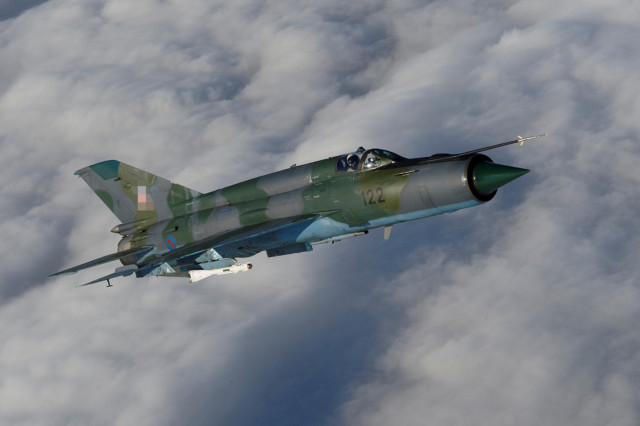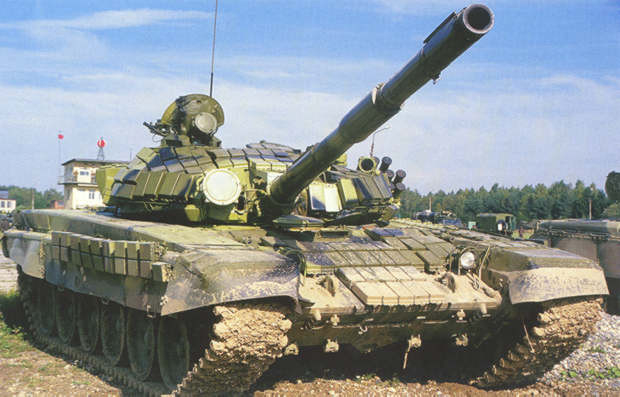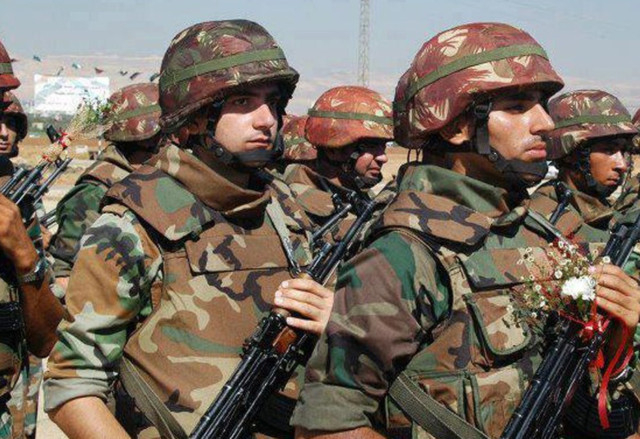
Despite two years of conflict and significant defections among the rank and file, the Syrian Arab Army (SAA) remains a capable military.
Before the civil war, the SAA claimed to field 220,000 men under arms and, perhaps, up to 350,000 reservists. Today, active personnel stood at a little over 125,000, of whom no more than 80,000 were considered by the regime to be loyal. Another 250,000 paramilitary personnel, including the dreaded “Shabihah” militias, were also available. About 70 per cent of career officers are Alawite.
The Army
Land Forces were restructured into 2 Armed Corps following the SAA’s withdrawal from Lebanon in 2005. In turn, the reorganisation produced 12 Divisions (7 armoured) and 3 independent infantry and mechanized infantry brigades. Most of the army’s equipment is Russian and, on paper, was quite impressive: over 4,600 tanks, including 1,600 T-72s, and as many armoured vehicles, along with 1,125 amphibious armoured scout cars (of which 125 were equipped for NBC warfare), 2,500 utility vehicles and nearly 5,300 artillery pieces, an undetermined number of missile systems (SCUD B, SCUD C, FROG 7, SS-21) and over 4,000 anti-tank units. The SAA fields as many as 5,000 Manpads (man portable air defence system) that are shoulder-fired anti-aircraft weapons.
The Navy
The Syrian Arab Navy (SAN) is structured into 3 Maritime Departments: Tartus, Latakiyyah and Mina’ Al Baydah (hosting the Naval Academy). It fields 3 submarines, 11 patrol boats (plus 16 missile boats), 2 frigates, 3 amphibious warfare vessels and 16 auxiliary units. Because of its location along the predominantly Alawite coast, the SAN may represent the regime’s last stand in case of a meltdown.
The Air Force
The Syrian Arab Air Force (SAAF) was and remains the most loyal branch of the military and can count on around 1,000 to 1,100 “combat ready” pilots. Structured along 5 independent Brigades and 2 Divisions, the SAAF flew over 500 fighters/bombers (all produced in the Soviet Union or Russia: MIG-21, MIG-23, MIG-25, MIG-29 and SU-22, SU-24, SU-27, around 40 transports (Soviet/Russian Tupolev, Ilyushin and Antonov planes), over 150 trainers, and perhaps over 300 combat helicopters (Russian MIs and French Gazelles).
Syria can only also rely on an elaborate Air Defence system, although its efficiency is peripheral since opposition forces lack air capabilities, notwithstanding over 650 missiles and 3,800-4,000 pieces of anti-aircraft artillery.
Assessment of Capabilities
With extremely limited access to the country, data on the putative degradation of the Syrian military in unclassified sources is scant, and subject to speculation.
Still, and notwithstanding defections, the armed forces continue to aid the Ba‘athist regime in Damascus. Although untrained for guerrilla warfare, the SAA demonstrated its capacity to attack rebel forces, while the SAAF enjoyed a monopoly over the skies.
An estimated 7,000 to 8,000 Lebanese Hezbollah fighters, as well as several thousand Iranian paramilitary Basij troops, rapidly replaced whatever degradations occurred. Still, the SAA failed to uproot opposition forces, and lost control over 60 per cent of the territory.
Syria received significant financial aid from Arab Gulf Arab states in the aftermath of the War for Kuwait in the early 1990s, and Moscow, the country’s chief supplier, forgave Syria nearly $10 billion of its $13.5 billion debt.
After 2011, Russia signed fresh contracts worth at least $4 billion, even if Damascus listed its 2012 military budget at around $2.5 billion. Iran was also a reliable source, both of weapons (drones and anti-defence systems) and financial aid, though specific details were not available.
Although Syria signed the Nuclear Non-Proliferation Treaty and accepted (signed but not ratified) the Convention on Biological Weapons, many assumed that its Weapons of Mass Destruction programmes were in abeyance. Yet, because Damascus was not party to the Convention on Chemical Weapons, its emphasis on the latter transformed it into one of the world’s chief stockpiles of mustard, sarin, VX and other chemical agents.















